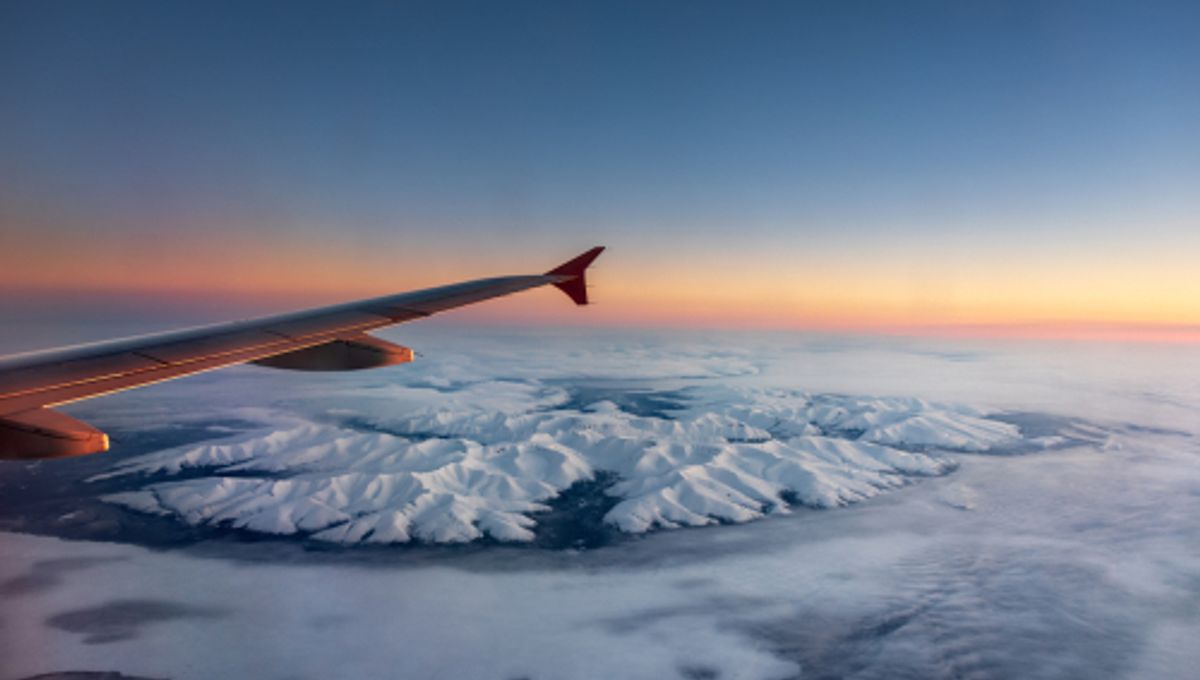
Scientists have floated the idea of refreezing the North and South poles by pumping the Earth’s atmosphere with microscopic particles to block out the sunlight. This, they say, is a “feasible and remarkably cheap” way to avert some of the impacts of the climate crisis – although they admit it comes with some risks.
Setting out the plan in a new study, the idea is to use a fleet of 125 high-altitude military aircraft to release aerosol particles into the stratosphere in both the Northern and Southern Hemispheres.
If injected at a height of 13,106 meters (43,000 feet) at a latitude roughly the same as Anchorage in southern Alaska and the southern tip of Patagonia, then the particles would drift towards the poles and shade the surface beneath from sunlight.
Less solar energy means less heat. If done correctly, the researchers argue this could drop the temperature in the polar regions by 2°C (3.6°F), roughly the same as pre-industrial levels. In turn, lower global temperatures would also be fostered.
“Game-changing though this could be in a rapidly warming world, stratospheric aerosol injections merely treat a symptom of climate change but not the underlying disease. It’s aspirin, not penicillin. It’s not a substitute for decarbonization,” Wake Smith, lead study author and an expert in geoengineering from Yale University, said in a statement.
“Any intentional turning of the global thermostat would be of common interest to all of humanity and not merely the province of Arctic and Patagonian nations,” Smith continued.
The team worked out that this plan would cost a cool $11 billion annually, a comparatively small sum of money considering how much climate change is expected to cost the world.
The Arctic is warming faster than any other part of our planet due to a phenomenon known as Arctic amplification or polar amplification. However, that’s not the prime reason the polar regions are being targeted in this plan. The researchers picked this region of Earth because its sparsely populated, meaning relatively few people would be impacted if it were to go wrong.
“There is widespread and sensible trepidation about deploying aerosols to cool the planet,” added Smith, “but if the risk/benefit equation were to pay off anywhere, it would be at the poles.”
If you think the idea of blocking out the Sun is the stuff of comically evil villains, you’re not alone. In early 2022, a group of scientists and governance scholars signed a letter urging a ban on technology that looks to reduce incoming sunlight on Earth. While the deepening climate crisis is making this kind of move more tantalizing, they argue that it could have unforeseeable knock-on effects across the world.
“The risks of solar geoengineering are poorly understood and can never be fully known,” the signatories wrote in their letter. “Impacts will vary across regions, and there are uncertainties about the effects on weather patterns, agriculture, and the provision of basic needs of food and water.”
“The speculative possibility of future solar geoengineering risks becoming a powerful argument for industry lobbyists, climate denialists, and some governments to delay decarbonisation policies,” they added.
The new study was published in the journal Environmental Research Communications.
Source Link: Scientists Want To Refreeze Polar Regions By Pumping Dust Into Atmosphere